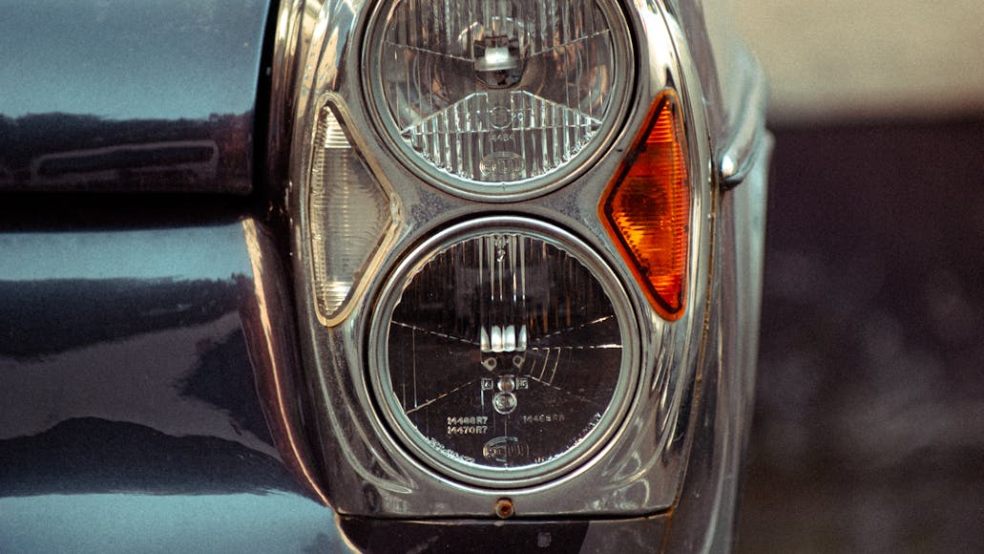
Keeping Moisture Away From Vintage Car Floors During Winter
Winter can cause serious problems for classic car interiors, with moisture being one of the biggest threats to vintage floor pans. During colder months, rain, snow, and slush tracked in on shoes can seep through inadequate floor protection, leading to rust and deterioration that's both costly and frustrating to repair.
This problem is particularly worrying for owners of classic British motors. Many vintage models from makers like Austin, Morris, and Triumph feature floor pans that are especially susceptible to moisture damage. Without proper protection, water can collect in hidden spaces, slowly eating away at these cherished vehicles from the inside out.
Selecting the right car mats offers a practical solution to this seasonal challenge. While original equipment mats might maintain authenticity, they often lack the moisture-trapping capabilities of modern alternatives. Today’s options range from heavy-duty rubber mats to custom-fitted solutions designed specifically for classic car models.
Why Classic Cars Need Special Attention
Classic cars differ greatly from modern vehicles when it comes to floor protection. Modern cars feature multiple layers of insulation, sealed floor pans, and integrated drainage systems. Vintage British models, however, were built in a different era with simpler designs that often leave them exposed.
Many beloved classics, such as the Mini, early Land Rovers, and Triumph TR models, have floor constructions that can trap moisture. The metal floor pans in these vehicles are typically thinner than modern equivalents and often sit close to road spray and puddles. Plus, many features have seams and joints that can allow water to penetrate if not properly sealed.
British classics come with their own set of challenges. The MGB, for example, has floor pans that curve and dip, creating natural collection points for moisture. Early Minis are notorious for their front floor sections that can rust through completely if exposed to prolonged dampness. Despite their sophisticated design, Jaguar E-Types have floor sections that can hold water in certain areas.
Consequences of Inadequate Protection
Original floor protection in most classics was basic compared to today’s standards. Many cars left the factory with simple rubber mats or basic carpet with minimal waterproofing. While period-correct, these original materials weren’t designed to manage the moisture exposure during winter driving or storage.
Left unchecked, moisture in floor pans leads to serious problems. What begins as surface rust can progress to structural weakness, compromising the vehicle's safety. The cost of floor pan replacement far exceeds the modest investment in proper moisture protection.
Signs of Moisture Problems in Classic Car Floors
Specialists from the Federation of British Historic Vehicle Clubs highlight that one of the earliest warnings of interior moisture is a lingering musty smell, particularly when the heater has run or after several days with the car closed. Triumph TR6 and MG MGB model owners only notice this problem when carpets are lifted, revealing unexpected dampness below. A reported case with a 1968 Morris Minor found growing rust where condensation became trapped under floor mats, showing the danger of undetected moisture.
Visual indicators, such as darker or discoloured carpet areas after rain or high humidity, signal possible leaks or trapped moisture. Rubbing a hand along carpet edges, especially in footwells and under seats, can reveal hidden dampness even when surfaces look dry.
Restoration guides and technical resources explain that curled or lifted mat corners and marks under mats almost always accompany severe moisture ingress. In documented cases, rust stains on mat undersides directly indicated water reaching the metal floor pan and beginning the corrosion process. These issues occur most when drainage is poor or absent, as in many classics.
Differing body types reveal moisture uniquely: saloon cars collect it in rear footwells, sports cars often show dampness near the pedals, while convertibles see issues along sill junctions.
Early detection steps, like using a small mirror to spot condensation under mats or applying moisture meters, can uncover issues before visible problems arise. Moisture-reactive paper strips placed under mats and checked routinely offer an effective early warning system.
Effective Moisture Barriers for Heritage Vehicles
Selecting a moisture barrier for a classic British car hinges on model-specific needs. Early Jaguar saloons, with intricate multi-level floor pans, need materials that contour precisely without leaving gaps. MGs and Triumphs require barriers shaped for areas like the pedal box and transmission tunnel, as these spots gather damp after wet drives and can trap water from slush-laden footwear.
Material choice directly affects moisture control. Rubber mats remain a popular and effective solution, especially during the colder months, thanks to their durability, ease of cleaning, and ability to contain debris like road salt and meltwater. To maximise their benefits, these mats must be well-fitted and designed with features that contain moisture rather than allow it to pool underneath. Quality options from manufacturers such as CarMats4u offer custom-fit rubber mats tailored to a wide range of vehicles, including some older models where dimensions are available.
Collectors often debate whether to prioritise originality or maximum protection. Using period-correct mats for display keeps interiors authentic, but swapping to modern moisture barriers preserves metalwork for everyday use or storage. This dual approach protects the car structurally while still allowing complete authenticity at shows.
Modern car mat systems, such as heavy-duty tailored rubber mats with raised edges, help prevent floor corrosion by containing moisture and debris before it reaches vulnerable metalwork. While advanced multi-layer breathable systems are more typical of specialist underlay materials, well-fitted mats that trap and isolate moisture are an effective first line of defence.
Seasonal mat rotation makes a noticeable difference: heavy-duty rubber with raised lips is ideal for winter, containing road salt and meltwater before they reach floor pans. In summer, fitted wool-bound carpet mats with modern moisture-resistant backing maintain showroom appearance while still offering everyday protection. Owners who rotate mats this way report reduced rust problems and less under-mat condensation.
Winter Storage Techniques to Keep Floors Dry
Effective winter storage begins with cleaning and drying floor pans, carpets, and mats. Any trace of dampness trapped inside the car before storage accelerates rust and mould once temperatures drop. Running a dehumidifier inside the cabin for 24 hours helps extract moisture hidden in fabrics and seams, which is especially important for classic British cars with tricky floor contours.
For added protection, apply sealant or automotive waterproofing in areas known to leak, focusing on seams and pedal boxes where older models tend to let in water. Placing silica gel or larger calcium chloride containers near footwells and under seats creates a moisture trap, significantly reducing corrosion risk over winter. Desiccants work best when placed around floor edges and in low corners, and need checking and replacing monthly during storage.
Garage conditions have a direct impact on interior moisture. Unheated and damp garages demand a balance: ensure light airflow to prevent condensation from forming, but avoid bringing in excessive outside humidity. Laying a moisture barrier or heavy plastic sheet under the car blocks ground vapour, often rising through concrete and affecting older floor pans. These combined steps help keep classic interiors dry and significantly reduce restoration costs.
Regular Driving Precautions for Vintage Winter Motoring
Classic car owners who drive through winter should use layered protection to guard against moisture. Placing removable waterproof mats over original floor coverings, especially during wet weather, creates a temporary barrier that stops water from reaching the carpet or bare metal. For drivers navigating frequently wet routes, a towel left in the cabin makes it easy to wipe shoes before entry, helping cut down on tracked-in water that causes rust in vintage British models.
When mats get damp, remove them promptly and let them dry in a warm, ventilated spot. Restoration experts recommend drying exposed floor areas with a soft, absorbent cloth and leaving doors or windows open securely for 30–60 minutes if conditions are dry, boosting airflow and minimising trapped moisture. Even for a day or two, ignoring damp mats accelerates corrosion, especially on older cars lacking modern insulation or drainage.
Distinct models have unique risks: Minis are vulnerable at the door bottoms, Triumph TRs near the pedal box, and Jaguars in the rear footwells. All require targeted mat selection and regular drainage checks. Swapping in different mat types as seasons shift and tailoring your approach to weather patterns ensures continuous protection.
These steps, drawn from classic car club recommendations and specialist guidance, protect originality and preserve interior health for extended winter use.

















